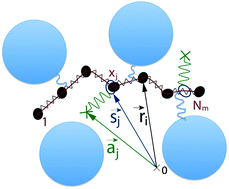Entanglement-induced reinforcement in polymer nanocomposites†
Abstract
We propose a coarse-grained model able to describe filled entangled

* Corresponding authors
a
Université Grenoble I/CNRS, LIPhy UMR 5588, 38041 Grenoble, France
E-mail:
jean-louis.barrat@ujf-grenoble.fr
b
Institut Lumière Matière, UMR5306 Université Lyon 1-CNRS, Université de Lyon, 69622 Villeurbanne Cedex, France
E-mail:
samy.merabia@univ-lyon1.fr
c MFP MICHELIN, 23, Place des Carmes-Déchaux, 63040 Clermont-Ferrand Cedex 9, France
We propose a coarse-grained model able to describe filled entangled

 Please wait while we load your content...
Something went wrong. Try again?
Please wait while we load your content...
Something went wrong. Try again?
E. Masnada, S. Merabia, M. Couty and J. Barrat, Soft Matter, 2013, 9, 10532 DOI: 10.1039/C3SM51207J
To request permission to reproduce material from this article, please go to the Copyright Clearance Center request page.
If you are an author contributing to an RSC publication, you do not need to request permission provided correct acknowledgement is given.
If you are the author of this article, you do not need to request permission to reproduce figures and diagrams provided correct acknowledgement is given. If you want to reproduce the whole article in a third-party publication (excluding your thesis/dissertation for which permission is not required) please go to the Copyright Clearance Center request page.
Read more about how to correctly acknowledge RSC content.
 Fetching data from CrossRef.
Fetching data from CrossRef.
This may take some time to load.
Loading related content
